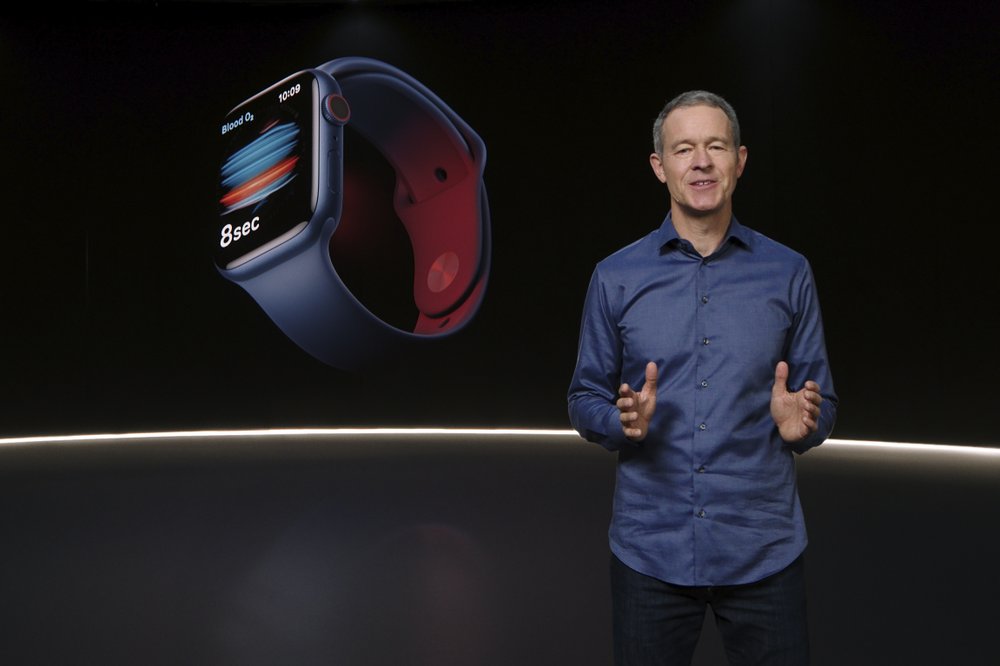Sci & Tech
Apple Debuts New Gadgets

Apple introduced a cheaper version of its smartwatch, its latest attempt to broaden the appeal of its trend-setting products while many consumers are forced to scrimp during the coronavirus pandemic.
The scaled-down Apple Watch follows on the heels of a budget iPhone the company released five months ago as the economy cratered and unemployment rates rose above the levels reached during the Great Recession more than a decade ago.
Apple also took the wraps off a new high-end watch model, a next-generation iPad and a couple of new subscription services during a virtual event held Tuesday. The company normally also rolls out its new iPhones at this time of year, but production problems caused by the pandemic have delayed their release until at least October.
CEO Tim Cook didn’t mention iPhones during Tuesday’s one-hour presentation recorded at the company’s massive, but now mostly empty, headquarters in Cupertino, California.
The Apple Watch has never come close to rivaling the iPhone’s popularity, but it does dominate the market for smartwatches. Canaccord Genuity analyst T. Michael Walkley estimates about 51 million Apple Watches will be sold this year, a 5% increase from last year. The research firm GlobalData pegs Apple’s share of the $64 billion smartwatch market at roughly 60%.
The new discount model, called the Apple Watch SE, will sell for $279 and be available beginning Friday. The price is a markdown from the $399 that Apple is asking for the next version of its higher end watch, the Series 6. Apple watches have been selling for an average of $377, based on Walkley’s calculations.
Apple added more features to help the watch monitor its owner’s health, including a sensor that can read blood oxygen levels. The feature, specific to the Series 6, could be timely, given that COVID-19 frequently attacks the lungs.
Apple also announced a new fitness subscription service tailored for its watches for $10 per month, as well as a new option that will bundle its existing music, video, news and gaming services into a package that will cost $15 to $30 per month.
Tens of millions of people already subscribe to Apple’s various services, helping the company double its revenue during the past four years within a division that creates products for the more than 1 billion iPhones, iPads, watches and other devices that the people already use.
The services division also includes Apple’s app store, which is under regulatory scrutiny for charging a commission of up to 30% for products sold through other companies who have no other option but to use the store to reach the mostly affluent consumers who buy iPhone products.
Kenya Insights allows guest blogging, if you want to be published on Kenya’s most authoritative and accurate blog, have an expose, news TIPS, story angles, human interest stories, drop us an email on [email protected] or via Telegram
-

 Business1 week ago
Business1 week agoKakuzi Investors Face Massive Loss as Land Commission Drops Bombshell Order to Surrender Quarter of Productive Estate
-

 News1 day ago
News1 day agoKenyan Driver Hospitalized After Dubai Assault for Rejecting Gay Advances, Passport Seized as Authorities Remain Silent
-

 Investigations1 week ago
Investigations1 week agoINSIDER LEAK REVEALS ROT AT KWS TOP EXECUTIVES
-

 Investigations6 days ago
Investigations6 days agoCNN Reveals Massive Killings, Secret Graves In Tanzania and Coverup By the Govt
-

 Business2 days ago
Business2 days agoConstruction Of Stalled Yaya Center Block Resumes After More Than 3 Decades and The Concrete Story Behind It
-

 Business1 week ago
Business1 week agoBANKS BETRAYAL: How Equity Bank Allegedly Helped Thieves Loot Sh10 Million From Family’s Savings in Lightning Fast Court Scam
-

 News1 week ago
News1 week agoEXPOSED: How Tycoon Munga, State Officials, Chinese Firm Stalled A Sh3.9 Trillion Coal Treasure In Kitui
-

 News1 week ago
News1 week agoEx-Boyfriend Withdraws Explosive Petition to Remove DPP After Criminal Case Against Capital FM Boss Resurfaces

















